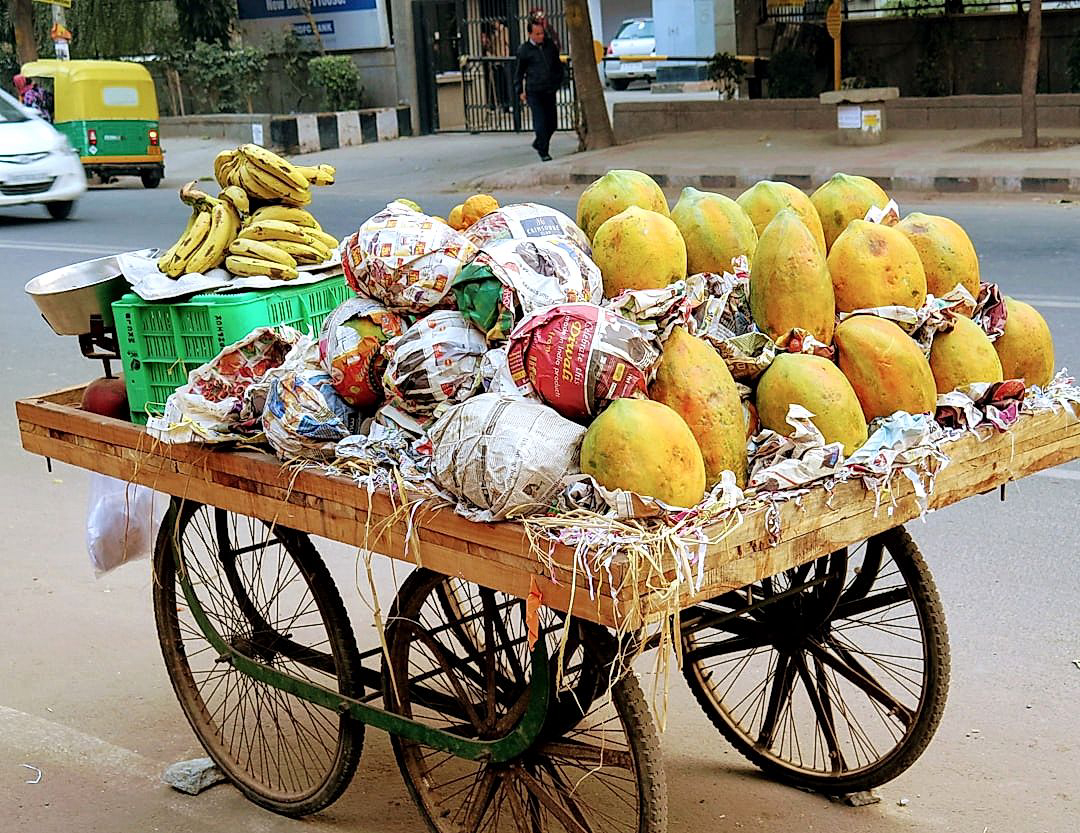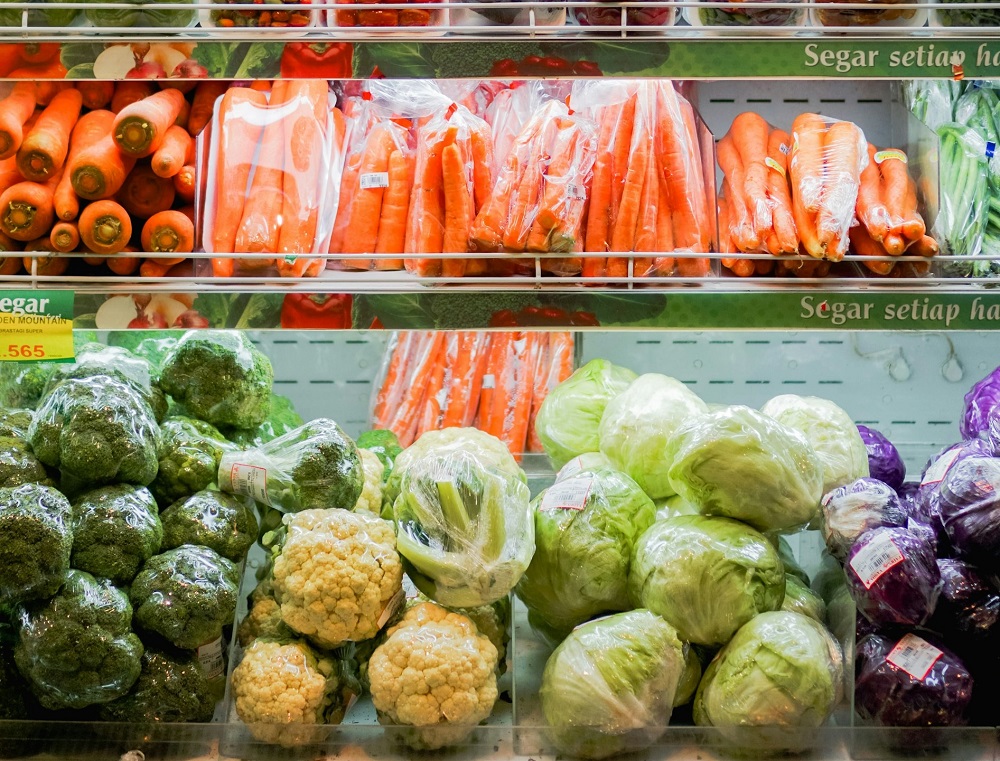Efficiency in the realm of agriculture has always been a critical factor impacting the success of produce processing operations.
Optimizing distribution is a key area of focus – vital to both minimizing losses and maximizing profits.
As an industry with many moving parts, streamlining the chain from harvest to consumer is of utmost importance.
This involves intricate planning, solid industry knowledge, and an understanding of current best practices.
However, the task is not insurmountable; simple adjustments can often lead to significant improvements.
Leveraging these changes matters not just to industry leaders, but to a global population that depends on the successful processing and distribution of fresh produce.
Contents
- Tips For Optimizing Distribution In Produce Processing
- 1. Configure Optimal Routing for Delivery Vehicles
- 2. Utilize advanced inventory management systems
- 3. Automate sorting and packaging processes.
- 4. Increase frequency of quality checks
- 5. Implement supply chain visibility tools
- 6. Consolidate Shipments to Save Cost
- 7. Train Staff to Reduce Wastes
- 8. Optimize Storage Facility Layouts
- 9. Regularly audit and update processes
- 10. Enhance supplier-customer communication channels.
- The Bottom Line
Tips For Optimizing Distribution In Produce Processing
1. Configure Optimal Routing for Delivery Vehicles
The process of optimizing distribution in the produce processing industry starts with the crucial task of configuring optimal routing for your delivery vehicles.
With increasing traffic in cities, it’s essential to schedule routes strategically to minimize travel time for deliveries.
Moreover, an efficient routing system also ensures that your products reach the market fresh and in a timely manner.
Route optimization not only reduces fuel costs but also improves the overall efficiency of the delivery process.
It’s worth noting that the technology for route planning has evolved significantly, with advanced software now capable of planning multi-stop routes with ease.
Such software can calculate the shortest and least congested routes, taking into account various inputs such as load capacity, vehicle performance, and current traffic conditions.
As a produce processor, introducing route optimization software into your supply chain can prove to be a significant cost and time saver.
The utilization of this software also reduces dependence on individual drivers’ knowledge for route planning and ensures that the delivery process continues to run smoothly even when experienced drivers are unavailable.
Moreover, by reducing travel duration, optimal routing solutions can minimize the risk of produce spoilage and enhance your distribution efficiency.
This becomes incredibly important when dealing with perishables such as fruits and vegetables that have a limited shelf-life and require to be transported as quickly as possible.
To implement this strategy, you would need to collaborate with a service provider who specializes in logistics and transportation software.
The provider would leverage their expertise to create a routing strategy best suited to your specific distribution needs and route patterns.
In the long run, this could result in overall lower operation costs, decreased delivery times, and improved customer satisfaction rates.
However, successful implementation of optimal routing requires that you thoroughly train your drivers and control room staff on the nuances of the software to avoid any operational hiccups.
In conclusion, the process of configuring optimal routing for delivery vehicles may require some initial investment, but the long-term savings regarding fuel costs and time, coupled with increased customer satisfaction, make it a vital aspect of optimizing distribution in produce processing.
2. Utilize advanced inventory management systems
The second step in optimizing distribution in produce processing lies in utilizing advanced inventory management systems. These systems play an indispensable role in keeping record of the products in stock, taking care of their proper storage, and coordinating their seamless delivery.
In the produce processing industry, dealing with perishable goods demands an impeccable level of inventory management to ensure freshness and minimize loss due to spoilages.
An advanced inventory management system typically uses modern technology such as barcodes, Radio Frequency Identification (RFID), and real-time tracking to enable accurate inventory control.
One of the undeniable benefits of integrating these systems into your processes is the increased accuracy and efficiency in managing stocks.
The most advanced inventory management systems go beyond mere stock management to incorporate other functions such as sales forecasting, replenishment algorithms, and performance analytics.
By utilizing advanced inventory management systems, businesses can maintain a well-balanced stock and prevent shortages, overstocks, and wastage, leading to significant savings and optimal utilization of resources.
Plus, these systems also allow for easy and quick product identification, which comes in handy when dealing with huge volumes or range of products.
Besides, an efficient inventory management system can automate order processing, reducing the time and effort required in manual tasks and mitigating human error.
Also, the ability to access accurate real-time data about product location, quantity, and status helps improve decision-making, allowing for strategic planning and scheduling.
Modern inventory management systems also offer multi-channel support, which means they can help you manage inventory across multiple selling platforms.
Switching to an advanced inventory management system can result in significant cost savings by reducing the labor and time expenditure associated with manual stock management.
It is, therefore, safe to conclude that the utilization of advanced inventory management systems in the produce processing industry can drastically optimize distribution by facilitating precise and real-time tracking, eliminating human error, and increasing productivity and efficiency.
We should always keep in mind that the choice of system depends on the specific needs and objectives of the business: the type of goods, the size and complexity of the operation, and the available budget.
In summary, optimizing distribution in produce processing starts with efficient inventory management system implementation, but it is not a one-size-fits-all solution and requires careful consideration based on individual business needs and constraints.
3. Automate sorting and packaging processes.
One of the transformative steps in optimizing distribution in produce processing is the automation of sorting and packaging processes.
Automation technologies have matured significantly over the years and they offer robust solutions for improving efficiency and reducing manual labor in distribution channels.
Automating these processes not only increases productivity but also ensures consistency and precision in the sorting and packaging tasks.
Automation in sorting and packaging processes can eliminate human errors, yield higher throughput rates, and allow a more fluid distribution flow
By utilizing state-of-the-art machinery and software, you can automatically sort items based on their weight, size, color or other criteria – making the distribution process faster and less prone to errors.
Sophisticated packaging machines can then take these sorted products and package them rapidly, securely, and consistently.
These machines can range from simple case erectors and tape machines to more complex robotic pick-and-place systems, or even fully automated packaging lines that can handle ever-changing product assortments and packaging formats.
The automation of these activities can result in a significant reduction in labor costs and lead times, leading to a more efficient and cost-effective distribution operation.
But the benefits of automation don’t stop there – by minimizing the handling of products, it can also contribute to an improvement in product quality and customer satisfaction.
Moreover, automation helps to ensure your operation can keep running 24/7, optimizing overall productivity.
One thing to consider when implementing automation is that systems should be customizable and capable of adapting to the specific needs and conditions of your operation – there’s no ‘one-size-fits-all’ when it comes to automation.
Remember, your automation solution should not only improve your current state but also have the flexibility to accommodate future growth or changes in your distribution process.
A well-designed and implemented automation system can be a game-changer, marking a turning point in the way that produce processing and distribution is carried out.
By integrating automation into sorting and packaging processes, you can set new standards of efficiency and accuracy in your distribution channel, and create a potent competitive advantage.
4. Increase frequency of quality checks
To optimize distribution in produce processing, one of the vital steps that industries should take is to increase the frequency of quality checks.
Performing regular quality checks ensures that the products maintain their premium quality and mitigate the risks associated with poor quality goods.
Quality checks are not restricted to the final products alone. They should be applied to every stage of the production process to underscore potential quality issues before they escalate.
Increased frequency of quality checks allows industries to maintain a consistent performance in their produce processing distribution.
This also provides an opportunity to identify specific areas where improvements can be made.
Adequate quality checks involve careful inspection of processes and thorough testing of products.
The use of sophisticated quality control equipment can substantially enhance these checks and ensure the maintenance of high standards.
Increasing the frequency of quality checks fosters the production of goods that meet both local and international regulations.
Training employees to carry out efficient quality checks is vital in achieving the desired levels of perfection.
Consistent quality checks result in fewer product returns, boosts customer satisfaction and propels the brand’s reputation.
By increasing the frequency of quality checks, industries can maintain a competitive edge in the market.
Moreover, regular inspections are likely to uncover manufacturing defects and failures, enabling industries to implement preventive measures earlier on.
Produce processors should also consider third-party testing to ensure objectivity and thoroughness in the quality checking process.
Regular quality checks not only help maintain high standards but also play a substantial role in maintaining a company’s credibility in the eyes of consumers.
Overall, increasing the frequency of quality checks can significantly contribute to optimizing distribution in produce processing as it guarantees that only products of superior quality reach the market.
5. Implement supply chain visibility tools
Implementing supply chain visibility tools is essential for enhancing distribution in produce processing.
This implementation can go beyond simply tracking the produce; it can equip businesses with advanced insights into their delivery network.
These tools offer real-time analyses of the conditions under which the produce is transported.
By tracking data points such as temperature and humidity, businesses can better control spoilage and prolong the shelf life of their produce.
Supply chain visibility tools allow businesses to proactively identify potential issues before they become larger problems, thereby reducing waste and loss.
This kind of real-time-data access can significantly improve the company’s ability to react to changes in demand.
Companies can use these tools to optimise their distribution routes and avoid traffic, leading to fresher produce on arrival.
An additional benefit of these tools is the ability for companies to share this information with their customers, increasing trust and transparency.
This visibility can also reduce the need for unnecessary safety stock, decreasing the operating costs of inventory.
By gaining a complete overview of the supply chain’s performance, companies can make informed decisions based on data, thereby increasing efficiency.
These visibility tools should not only be considered for the distribution side of the supply chain, but also for the producers and manufacturers.
Implementing these tools can also contribute to improved supplier relationships, as suppliers can cater their service on real-time information, which could lead to better collaboration and understanding.
Better supply chain visibility can also lead to improved customer satisfaction, as customers will get their orders in time and with the expected quality.
Through data integration across different stages within the supply chain, these visibility tools can reduce silos, enabling better coordination and consolidation of shipments.
Finally, the data gathered from these tools can allow companies to benchmark their performance and find areas of improvement in their supply chain.
6. Consolidate Shipments to Save Cost
The efficiency of your distribution process can be significantly enhanced through the consolidation of shipments.
Consolidating shipments reduce the overall cost associated with transportation, handling, and storage.
In it’s simplest terms, consolidation involves merging smaller shipments that are destined for similar locations into one larger shipment.
By taking this approach, companies can optimize their distribution by moving larger quantities of produce at a reduced cost.
Handling charges are typically higher when there are more individual shipments to process.
Consolidating these smaller shipments into fewer, larger ones may reduce these handling charges, leading to significant cost savings.
Similarly, consolidation can lead to lower storage costs since the number of individual shipments that need to be stored is reduced.
Not to mention, larger shipments make more efficient use of storage space, reducing the need for additional storage facilities.
Also, the consolidation of shipments may result in fewer trips needed to transport the goods, lower fuel consumption, and thereby reducing the shipping costs.
This approach has an added benefit of reducing the company’s carbon footprint, making their operations more environmentally friendly.
Consolidation also simplifies the tracking of shipments, as there are fewer shipments to track.
This may also enhance the overall visibility across the supply chain, improving the planning and execution of future shipments.
Therefore, consolidation is not merely a cost-saving measure; instead, it can be a significant component of a company’s strategy to optimize their distribution process.
However, while consolidation of shipments can offer several benefits, it’s crucial to analyze each situation individually to ensure that it’s the most effective solution.
An improper application of consolidation can lead to adverse effects like delayed shipments, perishable goods spoiling, or increased cost.
Consequently, a careful analysis paired with a well-designed plan can ensure shipping consolidation is a valuable tool for optimizing distribution in the produce processing industry.
7. Train Staff to Reduce Wastes
One significant way to improve distribution in produce processing is by training your staff to reduce wastes.
This not only contributes to creating a more sustainable company but also affects the efficiency of the distribution process.
Workforce training can have a staggeringly positive outcome on reducing wastes, and in the long run, the overall productivity of the supply chain.
Proper training of staff can deal a necessary blow to wastage in the produce processing industry, thereby optimizing distribution.
One of the first aspects this type of training should cover is the importance of proper handling of produce.
With the right techniques, your employees can prevent damage to products, effectively reducing waste and preserving resources.
Another crucial area to focus on is the understanding and application of a company’s inventory management system.
Being familiar with this system will enable employees to seamlessly maintain a balance between stocks and demands, lessening the possibility of wastage due to overstocking or understocking.
Proper waste sorting and disposal should also be a part of the training program.
It is beneficial to make sure that all discarded materials are disposed of correctly to avoid contamination of other products or create hazards in the workplace.
It is also crucial for your staff to be knowledgeable about the specifics of the produce they handle.
Understanding the unique needs of each type of produce when it comes to things like temperature, humidity, and handling, can significantly minimize waste.
The proper execution of quality checks is another area where staff training can reduce waste.
Ensuring that employees perform checks frequently and efficiently can help to identify potential issues before they turn into major problems, ultimately reducing waste.
Lastly, by fostering a culture of continual improvement, your staff can get better at identifying waste areas and coming up with effective solutions to reduce them.
Remember, training is not a one-time event; it should be an ongoing activity to maintain high levels of productivity and efficiency.
8. Optimize Storage Facility Layouts
The layout of your storage facilities plays a critical role in the efficiency of your distribution process in a produce processing business.
This is a crucial consideration whether you’re dealing with fresh produce destined for retail shelves, or processed products awaiting shipment.
An optimal layout facilitates smoother workflow, maximizes space, reduces unnecessary movements and ultimately increases productivity.
However, creating an optimal layout is more than simply arranging shelves and installing racks – it requires a strategic approach.
It’s vital to first understand the unique needs of your products, considering their size, weight, preservation requirements and how frequently they’re moved.
Once you have deeply understood these needs, you can begin to plan your layout accordingly.
Optimize for easy accessibility to all items to prevent any delays in processing orders.
Consider using vertical space to maximize storage capacity without taking up additional floor space.
Furthermore, remember to allow for the efficient flow of people and machinery, in order to minimize the time taken to move goods from one part of the facility to the other.
Take into consideration the necessary safety measures to minimize risks and potential damages to the products or injuries to your staff.
A well-planned layout eliminates unnecessary steps and simplifies the process of finding and retrieving items, which can considerably reduce labor costs.
It’s also important to regularly reassess your layout, especially when introducing new products, implementing new equipment, or expanding storage capacity.
Incorporate lean principles in your layout design. By doing so, you will be able to reduce wastage of space, time and resources.
Lastly, consider investing in advanced tools such as warehouse management systems or layout design software. These tools can help you optimize your layout in an efficient and cost-effective manner.
By focusing on the optimization of your storage facility layouts, you can improve operational efficiency and ultimately streamline your overall distribution process in produce processing.
9. Regularly audit and update processes
The importance of regularly conducting audits and updating processes cannot be overstated in the optimization of distribution in produce processing.
When we talk about audits in this context, it refers to the thorough examination of your distribution processes, systems, and protocols.
An effective audit process identifies areas of inefficiency, inconsistencies, or points of weakness in your distribution system.
Regular audits not only ensure standard compliance but also provide an opportunity to continuously improve and optimize processes.
This constant improvement and optimization of processes give your business a competitive advantage and contribute to better customer satisfaction.
Moreover, regular audits facilitate proactive problem-solving rather than reactive firefighting.
Proactive problem-solving enables your organization to address potential issues before they become major crises, thereby minimizing disruptions to distribution.
This can contribute significantly to maintaining the integrity of your perishable goods and ensuring they get to the right place at the right time in the best possible condition.
Following an audit, it’s essential to update processes based on the findings.
The purpose of updates is not just about fixing identified problems, but also about embracing innovations that can enhance efficiency and effectiveness.
Updates may range from minor adjustments to existing procedures to radical changes such as implementation of new technologies or strategies.
Updates not only address present challenges but also aim to future-proof your distribution systems against potential risks and market changes.
Keeping your processes up-to-date ensures your business remains competitive, resilient and adaptable in a rapidly-evolving market environment.
In conclusion, the regular auditing and updating of processes is a dynamic and ongoing exercise that should be integral to your distribution strategy.
By doing so, you can ensure that your distribution in produce processing remains optimized, robust, and responsive to changing needs and circumstances.
10. Enhance supplier-customer communication channels.
One of the most important factors in optimizing distribution in produce processing is to enhance supplier-customer communication channels.
Often overlooked, this strategy is crucial in understanding the demand, preferences, and feedback from the consumers.
By enhancing communication channels, suppliers can make necessary adjustments to meet the consumer’s evolving needs.
Today, numerous high-value tools and technologies are available to facilitate prompt and effective communication between suppliers and customers.
These tools range from customer relationship management (CRM) systems to advanced real-time tracking systems.
Vendors should therefore invest in these tools and technologies, regularly update them and train their employees on how to use them effectively for better customer communication.
Regular and efficient communication with customers will not only help in understanding their needs and preferences better, but also in building stronger relationships with them.
This in turn will enhance your company’s reputation in the market, thereby attracting more customers and boosting sales.
Moreover, effective communication channels can also be of great help in managing potential problems and challenges that might arise during the distribution process.
For instance, if a problem occurs in transit, prompt and effective communication with the customer can help resolve the issue quickly and prevent potential losses.
Improved communication can also help a business uncover opportunities for optimization, such as finding ways to reduce transportation costs or identify more optimal routes for delivery.
Furthermore, by gathering feedback from customers, suppliers can learn about potential improvements in their produce processing and distribution strategies.
Also, customers often appreciate being informed about the status of their orders and any changes that might affect them.
Therefore, effective communication channels are also key in enhancing transparency and customer trust.
In conclusion, enhancing supplier-customer communication channels is an imperative for businesses seeking to optimize their distribution in produce processing.
Last but not the least, remember that effective communication is a two-way street – it’s not just about conveying your message to the customers, but also about listening to what they have to say.
The Bottom Line
Inculcating sophisticated methods in logistics management can lead to highly productive results.
Optimal routing, state-of-the-art inventory management systems, and automated sorting or packaging can significantly streamline operations, thereby bringing down unnecessary costs.
Moreover, heightened quality checks, supply chain visibility tools, and staff training can further bolster efficiency and waste reduction.
Implementing organized storage facilities, consolidation of shipments, frequent auditing, and robust communication channels can drastically augment both internal processes and client relationships.
All these steps together forge a dynamic and efficient logistics management system that promises immense business growth and customer satisfaction.




